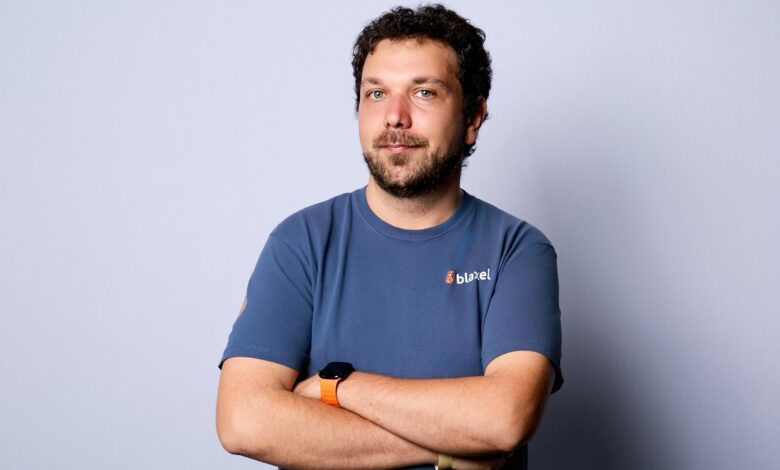
Charles Drappier is redefining how we think about infrastructure for the age of autonomous AI. As Co-founder of Blaxel, the self-described “AWS for AI Agents,” Charles brings 15 years of cloud infrastructure expertise to one of today’s most pressing challenges: how to run intelligent agents efficiently at scale. His previous company, ForePaaS, was successfully acquired by OVH, Europe’s largest cloud provider, giving him unique insights into both the possibilities and limitations of traditional cloud platforms.
Fresh from Y Combinator’s latest batch, Charles is building infrastructure purpose-built for AI agents: autonomous software entities that can browse code repositories, perform live searches, and interact with the real world without constant human oversight. In this conversation, he explains why existing cloud platforms weren’t designed for agent workloads, how Blaxel solves the fundamental challenges of stateful, interactive AI systems, and why the next generation of AI applications demands a completely new approach to infrastructure.
For those new to the space, what exactly are “AI agents” and why do they need specialized infrastructure that’s different from traditional cloud platforms?
An AI agent is an autonomous, goal-driven software entity that perceives its environment and takes actions without constant human input. Unlike a chatbot or single AI call, agents can interact with the real world by performing live searches, browsing code repositories, or even ordering something online. This makes them powerful but also resource-intensive, so the challenge is running them efficiently, reducing cost and power use while keeping performance high.
Traditional cloud platforms were built for predictable, mostly stateless workloads like web apps or batch jobs. AI agents are stateful, interactive, and often have bursts of activity involving many moving parts. Without rethinking the infrastructure, you end up with wasted compute, runaway costs, and slower agents.
Blaxel is described as “the AWS for AI Agents.” Can you break down what that means in practical terms and why existing cloud infrastructure falls short for AI applications?
Blaxel is built from the ground up for agent workloads. We provide low-latency communication between services like sandboxes, storage, and MCP tools, and we’re serverless by default so resources only run when needed.
Blaxel solves that, just like AWS once unlocked the web, but purpose-built for the unique demands of the AI agent era. Adapting existing cloud infrastructure for agents is hard because it was never designed for them. Agents need their own interface and execution model, and building from scratch makes it possible to design for autonomous, tool-using workloads from day one. Retrofitting systems built for human users always means compromises.
On the scaling side, traditional clouds cater to two extremes: stateless serverless or long-running stateful workloads, but agents require both: the instant spin-up of serverless with the persistence of stateful systems. By starting from zero, Blaxel can blend these seamlessly, free from legacy constraints, and focus entirely on the unique demands of agent workloads.
Your background includes building ForePaaS from the ground up and leading its successful acquisition by OVH. How did those experiences shape your approach to building infrastructure for AI agents?
At ForePaaS, we were infrastructure-agnostic: customers could run workloads on AWS, GCP, Azure, OVH, or on-premises. Our focus was making the experience seamless so they could build without worrying about the underlying complexity, a lesson in abstracting infrastructure while keeping it powerful.
With Blaxel, we’ve kept the developer-first mindset but chose not to be infrastructure-agnostic. To give AI agents the performance, low latency, and cost efficiency they need, we run our own optimized infrastructure. Controlling the stack end-to-end lets us combine the same ease of use with far better efficiency.
Much of your expertise centers on creating intuitive interfaces for complex systems. Can you walk us through a specific example of how Blaxel simplifies what would otherwise be a complex infrastructure challenge for AI builders?
Secure code execution is a good example. Normally, if an agent needs to run custom code, you’d have to provision compute, configure isolation, set up networking, manage permissions, and connect it all back to the agent.
With Blaxel, the agent itself can call an MCP endpoint to create a sandbox on demand. The sandbox comes with MCP already integrated, so the agent can send code, execute it securely in isolation, and get results, without the builder touching any infrastructure.
From the builder’s side, it’s just one command to deploy the agent. Once running, the agent can autonomously spin up sandboxes when needed and shut them down when done. Behind the scenes, we handle isolation, security, and lifecycle management automatically.
You have extensive experience with OAuth, authentication systems, and highly scalable platforms. What unique security and scaling challenges do AI agents present compared to traditional applications?
In past OAuth systems, users could grant applications limited, revocable access. With AI agents, we need the same, but now an agent can also delegate part of its own access to another agent. That’s powerful, but it demands strict scope control, instant revocation, and full visibility into every action.
Because Blaxel runs at the edge, with 16 regions today, our access control also lives at the edge. This way, security checks happen close to the workload, keeping agents safe without slowing them down. It’s the same rigor we applied to user authentication, adapted for autonomous agents that grant and share permissions in real time.
Moving from Europe’s largest cloud provider to the US startup ecosystem via Y Combinator, what key differences have you observed in how AI infrastructure is being built and adopted?
The biggest difference is speed of adoption. At Y Combinator, it felt like everyone was either building AI agents or integrating them into their product. That concentration meant we could meet dozens of potential users in a single week and see real needs up close.
In Europe, there are also customers building with agents, but they’re more spread out. YC put us right in the middle of the highest-velocity part of the AI market, giving us faster feedback and letting us adapt our product more quickly.
You’ve mentioned that traditional cloud platforms will fail the AI agent revolution. What are the fundamental limitations you see, and how is Blaxel addressing them differently?
Agents are shifting from large, general-purpose models with a few tools to smaller, fine-tuned models connected to many specialized tools, including infrastructure components like sandboxes. The challenge will be scaling them in both number and speed. That means giving agents direct, low-latency access to compute, storage, and execution without wasting resources, so they can act faster, at lower cost, and with greater real-world impact.
How do you see the AI agent ecosystem evolving, and where does infrastructure need to improve most urgently?
Agents are shifting from large, general-purpose models with a few tools to smaller, fine-tuned models connected to many specialized tools, including infrastructure components like sandboxes.
The challenge will be scaling them in both number and speed. That means giving agents direct, low-latency access to compute, storage, and execution without wasting resources, so they can act faster, at lower cost, and with greater real-world impact.
What advice would you give to other engineers looking to transition into entrepreneurial roles in the AI space?
For me, it all comes down to passion. I’m here because I love what I do, and it’s become a big part of my life. I’ve never been able to just follow an existing path. I need to create my own.
If you have that same mindset, this is the best moment to make the leap. The AI space is moving faster than ever, and there’s a huge opportunity for people who want to build something new rather than wait for the playbook to be written.
You’re building the foundational technology for the next generation of AI applications. What does success look like for Blaxel, and how will you know when AI agents have truly reached mainstream adoption?
In some sectors, we’ve already crossed a gap. A year ago, agents were just a possibility; now, they’ve completely reshaped my day-to-day as an engineer.
For Blaxel, success means enabling the world to scale agents without consuming more and more power. Today’s infrastructure won’t handle the growth ahead if we don’t change how we build.
Mainstream adoption will mean agents are as common in other sectors as they are in ours, and that we’ve proven it’s possible to get there without an explosion in environmental or monetary cost. If everyone can have the same capabilities we have today, without paying for it in wasted resources, we’ve succeeded.



